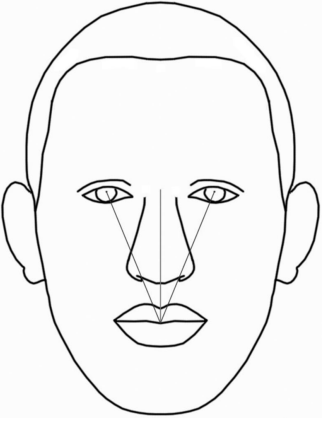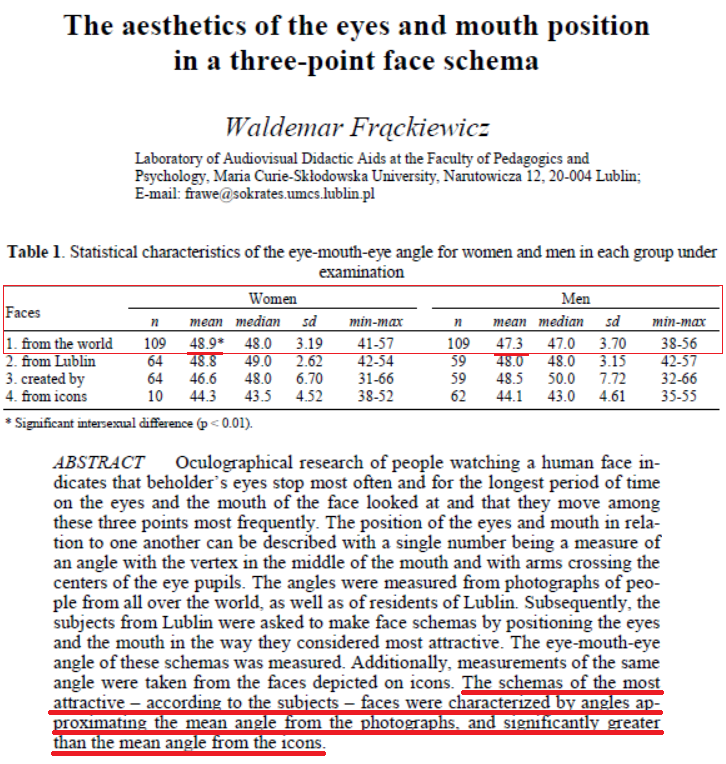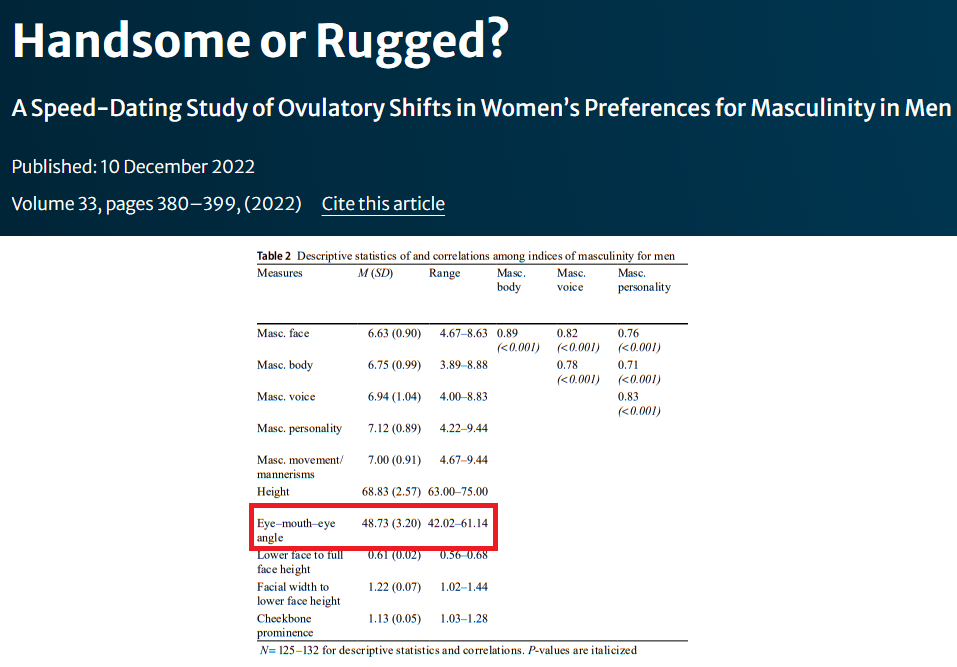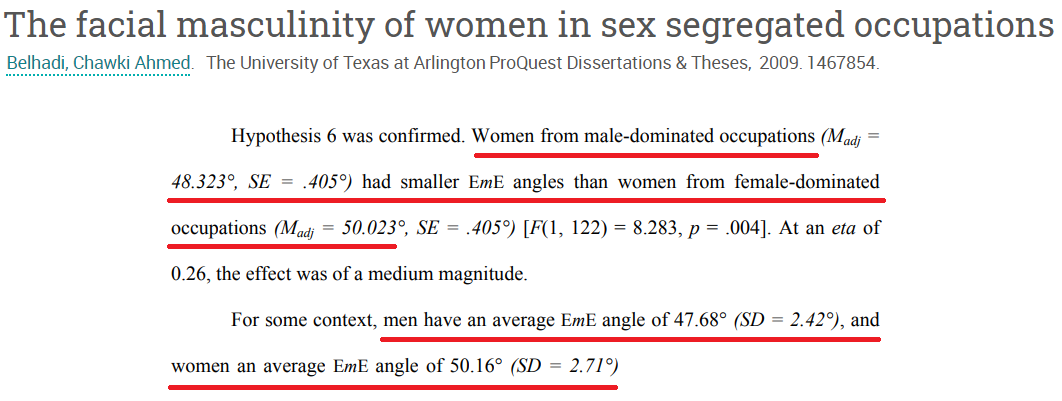Summary
The eye-mouth-eye (EME) angle refers to the angle formed between the eyes and the mouth, generally indicating how far apart the eyes are set relative to the mouth. Danel and Pawlowski (2007) established that the EME angle is sexually dimorphic, with females having a larger angle (50.16°) compared to males (47.68°), suggesting that a wider EME angle is typical and potentially attractive in females. Frąckiewicz (2001) supported this by showing that women have a mean EME angle of 48.9°, larger than men’s 47.3°, and that participants preferred face schemas with wider EME angles, aligning with real-life averages. Wu et al. (2022) reported a range of 42.02°-61.14° for the EME angle, with an average of 48.73°. Belhadi (2009) confirmed the reliability of the EME angle in assessing facial masculinity, noting smaller angles are more masculine, while wider angles are more feminine, with women in male-dominated occupations having smaller EME angles than those in female-dominated fields.
Research
The eye-mouth-eye (EME) angle refers to the angle formed between the eyes and the mouth. This angle generally indicates how far apart the eyes are set relative to the mouth.

A notable study published in the Journal of Comparative Psychology by Danel and Pawlowski (2007) titled “Eye–Mouth–Eye Angle as a Good Indicator of Face Masculinization, Asymmetry, and Attractiveness (Homo sapiens)” highlighted this difference and has shown that the EME angle is sexually dimorphic, meaning that it differs between males and females.. The study indicated that, on average, females have a larger EME angle than males. Specifically, the mean value of the EME angle for women was found to be 50.16°, while for men, it was 47.68°, with this difference being significant. Although the study focused on male attractiveness, it suggested that traits opposite to masculinized features, such as a larger EME angle, are more common in females. This could imply that a wide EME angle is considered normal and potentially attractive in females.

Another study by Frąckiewicz (2001) shows that “the eye-mouth-eye angle measured in the pictures of people from all over the world proved to be significantly (p < 0.001) larger in women (a mean of 48.9º) than in men (a mean of 47.3º)”. Moreover, the study found that the most attractive face schemas created by participants had eye-mouth-eye angles that closely matched the average angles measured from real photographs of people. Specifically, these angles were “significantly greater than the mean angle from the icons”. This suggests that people perceive faces with wider eye-mouth-eye angles as more attractive, as they align more closely with real-life averages rather than the narrower angles often depicted in traditional icons.

Apart from these studies, a more recent study by Wu et al. (2022) titled “Handsome or Rugged? A Speed-Dating Study of Ovulatory Shifts in Women’s Preferences for Masculinity in Men” mentioned the range of values for the Eye-Mouth-Eye angle. As per this study, the range of values for the EME angle is 42.02°-61.14° with a mean value of 48.73°.

Additionally, a study by Belhadi (2009) suggests that the Eye-Mouth-Eye angle is a reliable metric for assessing facial masculinity. A smaller EmE angle is associated with higher facial masculinity, whereas, a wider angle can be associated with higher facial femininity. As per this study, the average EmE angle for men is 47.68°, and for women, it is 50.16°. Moreover, the study found that women from male-dominated occupations (48.323°) have smaller EmE angles compared to those from female-dominated occupations (50.023°).

Reference
Danel, D., & Pawlowski, B. (2007). Eye-mouth-eye angle as a good indicator of face masculinization, asymmetry, and attractiveness (Homo sapiens). Journal of Comparative Psychology, 121(2), 221. https://psycnet.apa.org/doi/10.1037/0735-7036.121.2.221
Frąckiewicz, W. (2001). The aesthetics of the eyes and mouth position in a three-point face schema. Anthropological Review, 64, 93-100. https://doi.org/10.18778/1898-6773.64.07
Wu, K., Chen, C., & Yu, Z. (2022). Handsome or Rugged? A Speed-Dating Study of Ovulatory Shifts in Women’s Preferences for Masculinity in Men. Human Nature, 33(4), 380-399. https://doi.org/10.1007/s12110-022-09434-y
Belhadi, C. A. (2009). The facial masculinity of women in sex segregated occupations (Doctoral dissertation, The University of Texas at Arlington).